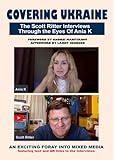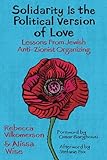In his epic 1491: New Revelations of the Americas Before Columbus, author Charles C. Mann presented evidence after evidence that the Original Peoples of Turtle Island had highly developed societies and had acquired intricate knowledge (especially, agriscience) and some had developed advanced cities before Europeans arrived looking for commodities they could trade for or plunder.
 Mann has followed up with 1493: Uncovering the New World Columbus Created (Vintage Books, 2012). 1493 begins with Christopher Columbus, who Mann refers to by the name he used at that time, Cristóbal Colón. The author does not deny the “failings” of Colón but amorally writes that the Genovese admiral initiated a massive globalization, much of it rooted in the crops produced by the Indigenous peoples of Turtle Island. It was the beginning of the Homogenocene, as Mann defines it: “a new biological era … mixing unlike substances to create a uniform blend.”
Mann has followed up with 1493: Uncovering the New World Columbus Created (Vintage Books, 2012). 1493 begins with Christopher Columbus, who Mann refers to by the name he used at that time, Cristóbal Colón. The author does not deny the “failings” of Colón but amorally writes that the Genovese admiral initiated a massive globalization, much of it rooted in the crops produced by the Indigenous peoples of Turtle Island. It was the beginning of the Homogenocene, as Mann defines it: “a new biological era … mixing unlike substances to create a uniform blend.”
Profit was a motivating factor for many seafarers, and trade was the means to profit. The desire for profit takes on a life of its own, and trade was often fraught with violence. As 1493 details, it was bound with slavery, exploitation, and warring. Corruption was also rife. Of the Spanish, Mann wrote: “To pay for its foreign adventures, the court borrowed from foreign bankers; the king felt free to incur debts because he believed they would be covered by future shipments of American treasure, and banks felt free to lend for the same reason.” The corruption within today’s financial world that precipitated a massive banking crisis points to the continuity of globalization forces.
The Columbian Exchange, as Mann narrates, connects potatoes, sugar cane, maize, tobacco, and earthworms, beetles, and mosquitoes with colonialism, slavery, exploitation, and commerce.
“Jamestown,” writes Mann, “was a brushfire in a planetary ecological conflagration.” Tsenacomoco was a thriving Indigenous empire, but the English colonists struggled: “starving in the midst of plenty.” 1493 relates the shocking statistic that 80 percent of the 7000 English shipped to Virginia between 1607 and 1624 died.
Of course the story of Jamestown wouldn’t be complete without Mann’s examining the Disney rendering of the story of Pocanhantas. ((For a more in-depth treatment, check Dr. Linwood “Little Bear” Custalow and Angela L. Daniel “Little Star,” The True Story of Pocahontas: The Other Side of History (Golden, CO: Fulcrum Publishing, 2007. ))
The introduction of new crops brought new vectors. Tobacco in Virginia brought malaria. Sugarcane in the Caribbean and South Ixachilan (South America) brought yellow fever.
Mann notes that slavery was not peculiar to White Europeans. The First Nations practiced it, and Africans were complicit in the enslavement of their people. But why slavery instead of servants who were cheaper, asks Mann? The short answer was that malaria had a hand. 1493 even asks, “Should part of the credit for the Emancipation Proclamation be assigned to malaria?”
1493 takes readers across the Pacific Ocean and marvels at the then unrivaled technological advancement of the Chinese in the fifteenth century. The Fujianese were about to become another epicenter of the Homogenocene. The Spanish (Basques and Vicuñas) forcefully took advantage of Andeans’s advanced metallurgy to send silver to the Philippines for trade with the Fujian merchants.
Crops also poured into Fujian – 1493 lists sweet potatoes, maize, peanuts, tobacco, chili peppers, pineapple, cashew, manioc – indirectly by way of Portuguese and Dutch traders. Indigenous crops spurred a population explosion in China.
The Homogenocene also led to “an environmentalists’s nightmare, the short-sighted pursuit of small-scale profit steered a course for long-range, large-scale disaster.” Crops were grown without regard for deforestation, soil erosion, flooding, and the like. 1493 gives the example of Zuitou, a village along Huang He (Yellow River), where terraces constructed from the rich loess and irrigated by a hydraulic infrastructure connected to the Grand Canal were constantly being breached.
Vaclav Smil tells Mann: “It must be one of the greatest wastes of human labor in history.”
“Tens of millions of people being forced to work night and day, most of it on projects that a child could have seen were a terrible stupidity. Cutting down trees and planting grains on steep slopes – how could that be a good idea?”
European ignorance is questioned because of their reliance on Solanum tuberosum, the common potato, with the result of a potato blight causing a great famine. The famine never hit the people of the Andes because they averted the folly of monoculture; thousands of potato varieties were enjoyed by them.
The precious commodities of the western hemisphere were often a bane to the Original peoples. The presence of guano islands off Peru – which filliped agro-industry — would lead to the mephitic enslavement of Indigenous peoples. The rich fertilizer, guano, supported intensive monoculture.
The Columbia Exchange included pests and parasites: Plasmodium infestans, Leptinotarsa decemilneata (potato beetle), etc. The answer was to treat crops with toxic pesticides to kill the pests. What effect this would have on natural predators of the pests, on people who ate the crops, and on development of resistance to the pesticides exposed ignorance assuaged by short-term profits for a few profiteers.
Black Gold (rubber) spurred technological innovation and industrialization, and profit-driven subjugation of Indigenous peoples. ((See Adam Hochschild, King Leopold’s Ghost: A Story of Greed, Terror and Heroism in Colonial Africa (Boston: Houghton Mifflin Co., 1999).)) The superiority of natural rubber, especially for crucial components in industry and defense, led to nature and labor being exploited around the world to plant Hevea brasiliensis. Mann focuses on planting the introduced tree in China’s Yunnan province and across the border in Laos.
The Columbian Exchange also caused an “unprecedented reshuffling of Homo sapiens.” Capitalism and trade required labor. This led to the exploitation of labor (especially Indigenous peoples). It also led to enslavement of peoples. At its height, the slave trade saw 11.7 million captive Africans shipped to the western hemisphere – “a massive transfer of human flesh unlike anything before it.” In the western hemisphere the enslaved outnumbered their enslavers immensely. By 1565, Africans outnumbered Europeans seven to one. The Catholic Church was fine by this as it was a chance to bring Jesus to the uninitiated.
Europeans succumbed to their sweet tooth, and Africans were forced to tend the sugar plantations.
Mann points out that the racism of the early Homogenocene was of a different sort than nowadays, and there was much mixing of races. While genetic contamination was not feared, moral contamination was a concern.
It is a natural condition of most humans to desire freedom (albeit, a seemingly rarer desire in the case of wage slavery); thus, it was no surprise that slaves would escape when opportunity presented itself. This resulted in new communities, fugitive communities – – or “maroon” communities, in English. Mann tells the story of some of these communities, in places such as Brazil, Panama, Mexico, the US, Ecuador, Hispaniola, and Haiti. It is in Haiti that Mann describes how the “brilliant, charismatic, and dictatorial” Toussaint Louverture led a successful revolt against French rule and enslavement, leading Napoleon Bonaparte to sell France’s Turtle Island territories to the US. Mann concluded, “Much of the United States’ present territory is thus owed indirectly to maroons…”
Haiti was embargoed by the US and all of Europe for the offense of having secured the Haitian people’s freedom. Freedom would be fleeting for the former maroons of Haiti and their descendants. Mann also details how maroon (and Indigenous) communities in the Amazon continue to be expropriated and exploited today.
1493 is a riveting read that takes the reader around the world, through various epochs after Colón’s 1492 voyage. The book has its share of villains (?) from Andrés de Urdaneta y Cerain, Hernán Cortés, Julio César Arana, Henry Wickham, Vasco Núñez de Balboa, and Zheng Chenggong to Pope Alexander VI and resistance heroes (?) such as Catarina de San Juan, Juan Garrido, and Zumbi to Dona Rosario.
Class struggle is rife throughout the book. Mann’s narrative tells of royalty and capitalists profiting from the violence wreaked against the poor and the weak to enrich their masters. Resistance was often doomed by workers and slaves inability to unite and stay united, as well as compromising with their oppressors. Nationalism was used to propagandize and manipulate the masses of people against their better interests.
Is the Homogenocene just an outcome of capitalist accumulation and corporate globalization? Read the excellent account by Mann and find out.










